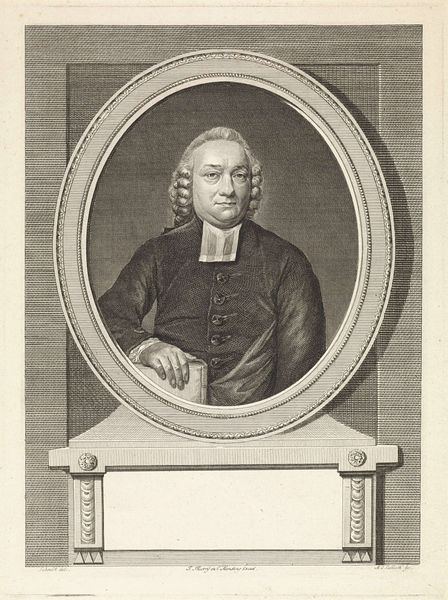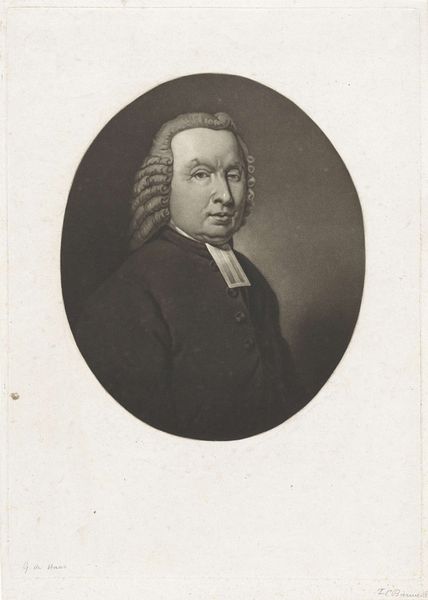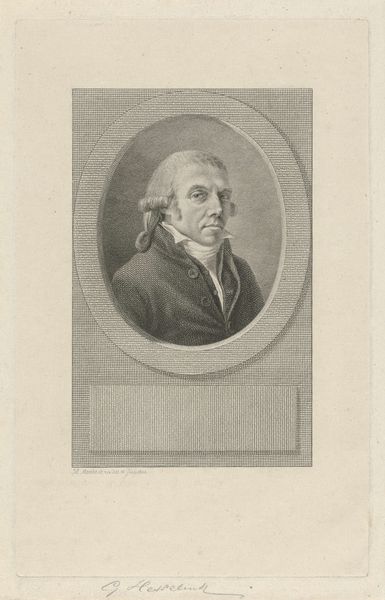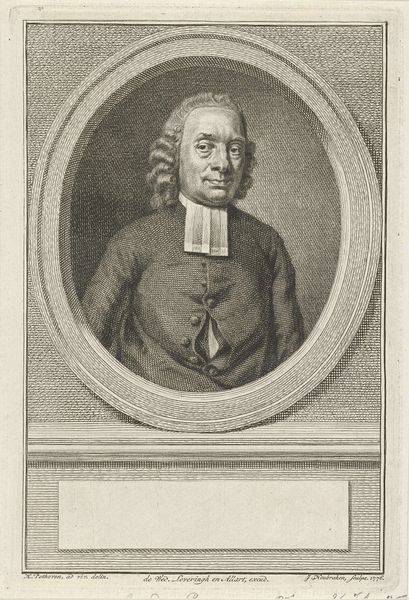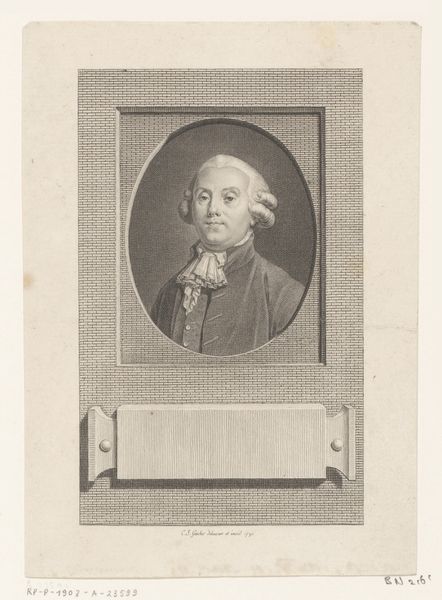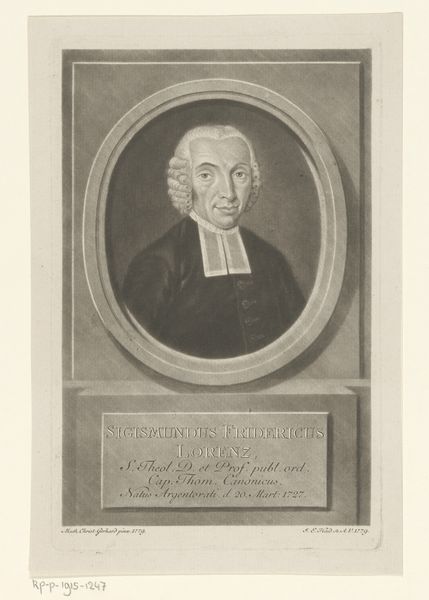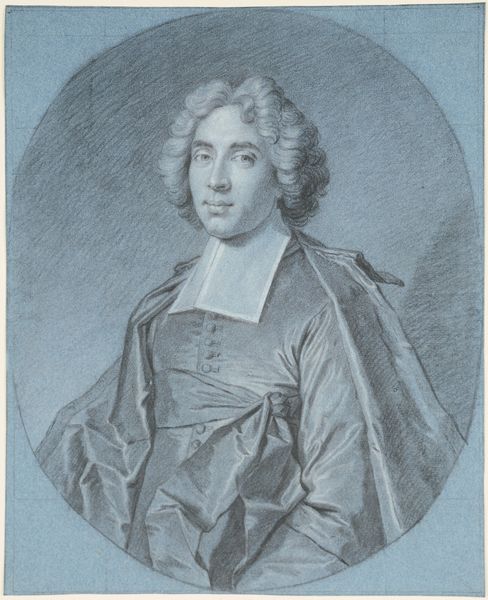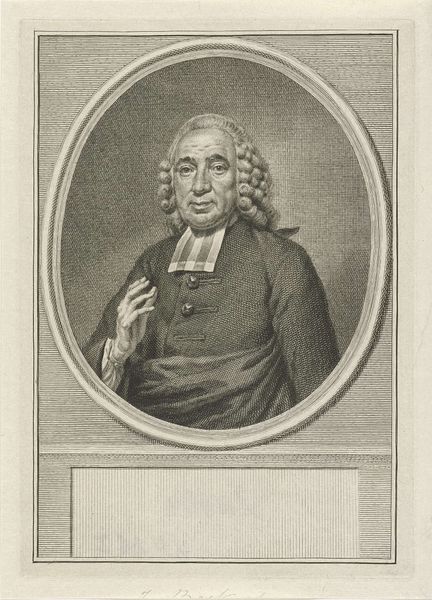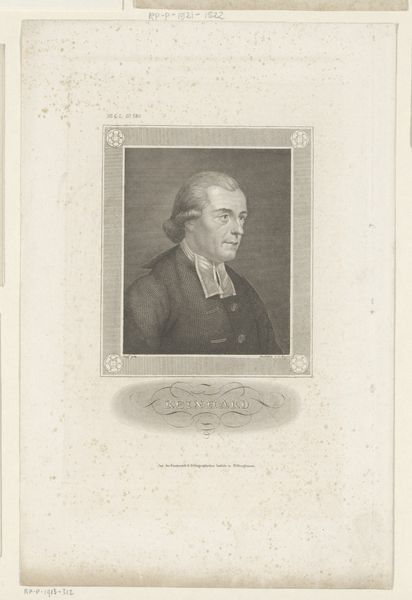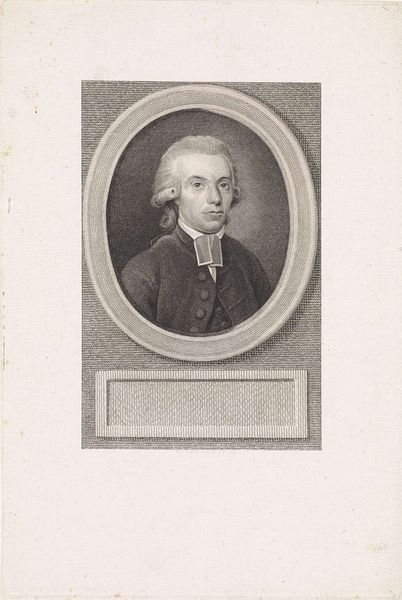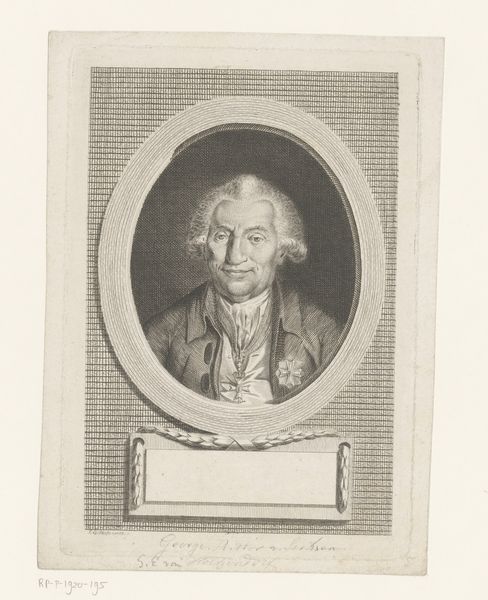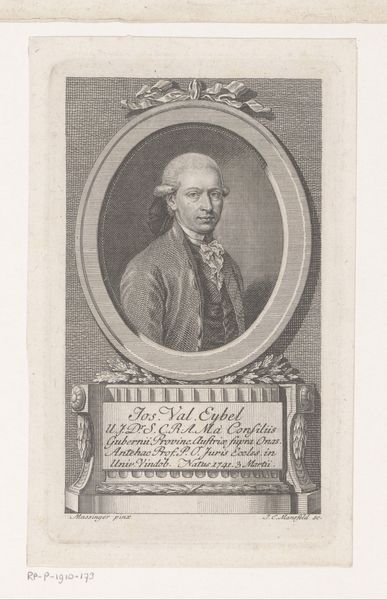
Portret van de Amsterdamse predikant Esdras Heinrich Mützenbecher 1784
0:00
0:00
print, engraving
#
portrait
#
neoclacissism
# print
#
historical photography
#
genre-painting
#
engraving
Dimensions: height 350 mm, width 235 mm
Copyright: Rijks Museum: Open Domain
Curator: Let’s turn our attention to this engraving: "Portret van de Amsterdamse predikant Esdras Heinrich Mützenbecher," created in 1784 by Reinier Vinkeles. Editor: It immediately strikes me how much texture Vinkeles managed to coax out of simple lines. Look at the wall behind the oval portrait, or even the fabric of the clergyman's coat. It all points to skilled labor. Curator: Indeed. Vinkeles' craft with the burin creates more than just a likeness; it constructs a powerful symbol of piety and authority, conforming to the conventions of neoclassical portraiture, notice the sober reserve? The clean lines and clear forms present Mützebecher as a pillar of reason. Editor: And yet the trappings of the engraving medium feel essential to this image. It is very much *of* the print shop – not something aspiring toward grand oil painting, for instance. Was this meant for mass distribution, perhaps? I imagine a community wanting multiple copies. Curator: Likely so. Engravings like these were crucial for disseminating images and ideals. Mützebecher’s gaze is direct but gentle. It presents the pastor not as an unreachable figure but as a guide, mirroring the distribution strategy of accessible prints aimed at households and personal devotion. Editor: So the choice of engraving itself emphasizes accessibility? No gold leaf, no expensive pigments—just skilled hand labor multiplying this image. Interesting how the means reflect the man, supposedly. Curator: Precisely. The portrait isn’t merely an image of Mützebecher; it embodies the values he preached – a calculated message designed to resonate through widespread visual circulation, making him both visible and, in a way, universally present. Editor: The commitment to process is so powerful here. It’s about replicating, sharing, disseminating. It makes you wonder, where did all these copies end up? It highlights the importance of how art exists as object of commerce. Curator: A potent reminder that images, no matter their scale or means of production, function as cultural and social actors. The image echoes ideals across time and space. Editor: Agreed, and focusing on materials allows us to trace and acknowledge the historical networks that shaped Mützebecher’s public image.
Comments
No comments
Be the first to comment and join the conversation on the ultimate creative platform.
